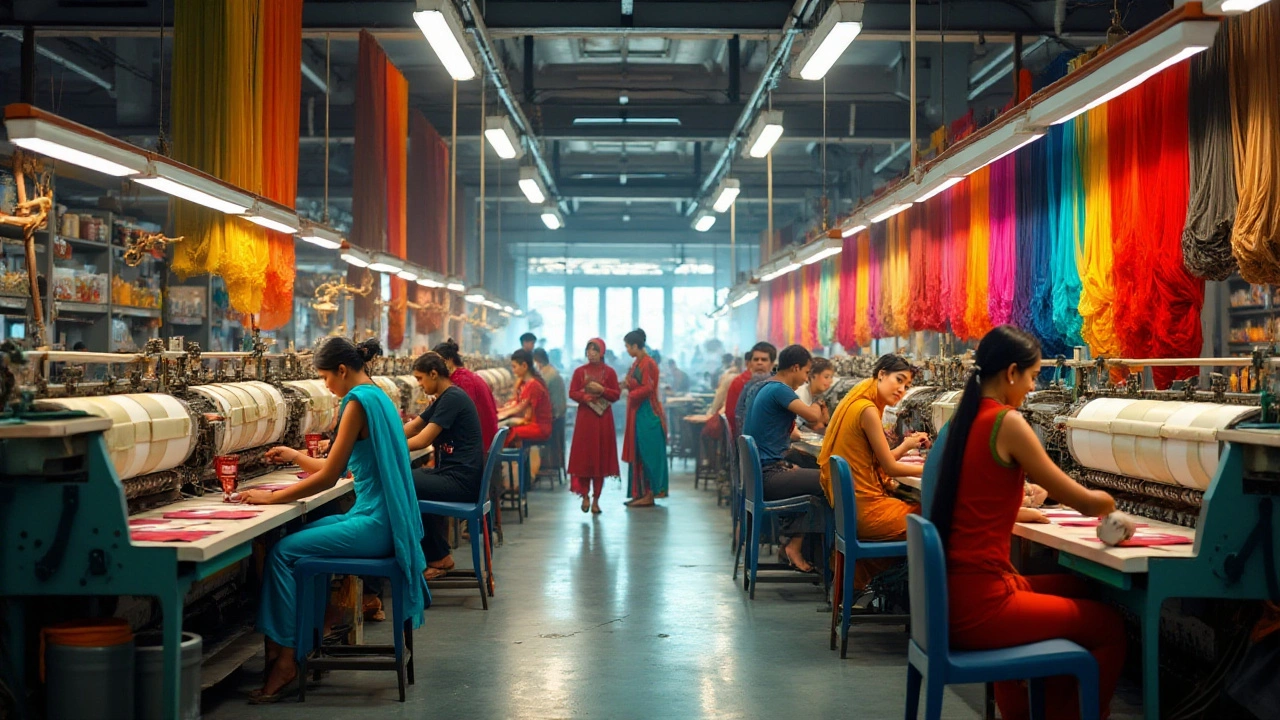- Who Makes Honda Engines in India? The Real Manufacturer Behind the Power Nov 17, 2025
- India's Pharma Manufacturing Companies: Count, Growth, and Industry Insights Jun 29, 2025
- India's Second Biggest Chemical Industry Owner: A Look Beyond Reliance May 5, 2025
- Where to Find the Cheapest Electronics: Best Countries for Tech Bargains Jul 6, 2025
- Are Tata Cars Sold Internationally? Exploring Global Reach Mar 2, 2025
Textile Manufacturing Costs – What You Need to Know
If you’re planning a garment line or just curious about why a T‑shirt costs what it does, the first thing to check is the cost chart. In India, textile manufacturing costs are shaped by a handful of clear factors – raw material, labor, energy, overheads and logistics. Knowing where each pound comes from helps you spot savings and avoid nasty surprises later on.
Key Cost Components
Raw material price. Cotton, polyester, silk and blended yarns make up the biggest slice of the bill. Prices swing with global commodity markets, harvest quality, and import duties. A change of just 5 % in cotton rates can shift a 200‑gram shirt’s cost by up to ₹15.
Labor expenses. India’s wage rates are lower than many Western countries, but they still vary by region, skill level and factory size. Skilled weavers in the South may earn more than helpers in a small unit up north, and overtime costs add up quickly during peak seasons.
Energy and utilities. Running looms, dye machines and HVAC systems draws a lot of power. Electricity rates differ state‑by‑state, and factories that rely on diesel generators face higher overhead. Switching to solar or negotiating bulk rates can shave 10–15 % off the energy line.
Overhead and administration. These include rent, depreciation of machinery, quality control labs and management salaries. A modern, high‑capacity mill spreads its fixed costs over more output, reducing per‑unit overhead compared to an older, low‑volume shop.
Logistics and shipping. Moving raw yarn to the factory and finished fabric to warehouses adds transport charges, loading fees and sometimes customs duties for imported fibers. Consolidating shipments or using nearby ports cuts both time and money.
Ways to Cut Costs Without Hurting Quality
First, negotiate with suppliers. Bulk buying or signing long‑term contracts often secures better yarn rates. Some mills also offer discounts for early payment, so keep cash flow tight.
Second, embrace lean manufacturing. Mapping every step of the production line reveals wasted motion, excess inventory and bottlenecks. Simple changes like reorganizing cutting tables or adopting a just‑in‑time fabric roll system can trim waste by up to 20 %.
Third, invest in energy‑efficient equipment. Modern looms use less power and generate less heat, meaning lower cooling costs. The upfront spend pays off within a year or two through lower electricity bills.
Fourth, look at waste reduction in dyeing and finishing. Recycling water, re‑using dye bath residues and using low‑water printing technologies not only protect the environment but also lower chemical and water charges.
Finally, consider location. States like Gujarat and Tamil Nadu offer tax incentives, better logistics and more reliable power supply. Setting up a small production unit there can lower both overhead and transport expenses.
Remember, the goal isn’t just to cut the price tag but to keep the product competitive. When you understand each cost driver, you can make smarter choices – whether that’s swapping a pricier fiber for a comparable alternative, tweaking the design to use fabric more efficiently, or timing orders to avoid peak freight rates.
In short, textile manufacturing costs in India break down into material, labor, energy, overhead and logistics. By tackling each area with negotiation, lean practices, smarter equipment and strategic location, you can keep your garments affordable without compromising on quality.
Cost Analysis for Setting Up a Small Textile Manufacturing Unit in India
- Aarav Sekhar
- Dec 11, 2024
Discover the financial requirements and considerations for establishing a small textile manufacturing factory in India. This article will provide insight into the primary cost factors, like machinery, labor, and location, and offer tips to efficiently manage investments. Understand how market trends and government policies influence costs, and get familiar with the step-by-step process to jumpstart your textile business. Learn the financial dynamic within India's booming textile sector to make informed decisions.
